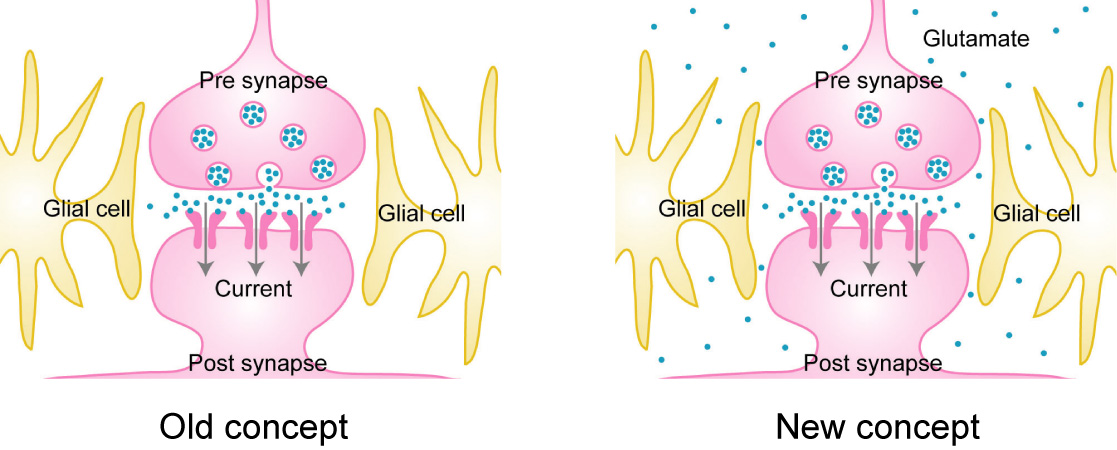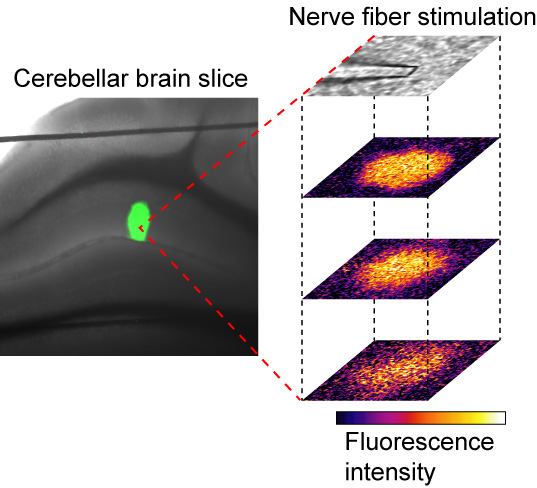Spillover of neurotransmitter glutamate from synapses
Glutamate is the major excitatory neurotransmitter in the central nervous system. The conventional view is that glutamate is confined within the synaptic cleft to avoid the synaptic crosstalk (Fig. 1, left). However, it has been suggested that glutamate escapes from the synaptic cleft to mediate many important brain functions. However, this notion remains elusive, because no one has ever seen glutamate dynamics around synapses due to the absence of appropriate technology. We thus developed a new fluorescent indicator of glutamate and successfully visualized extrasynaptic glutamate dynamics. We observed significant increases in extrasynaptic glutamate concentration during synaptic activity (Fig. 2). This observation provides evidence that glutamatergic transmission also occurs in the extrasynaptic locations (Fig. 1, right). Such extrasynaptic glutamatergic transmission seems to be utilized for the regulation of complex brain functions, and the spillover of glutamate may underlie the difference between the brain and the computer.
Program member
Masamitsu Iino (Department of Pharmacology, Graduate School of Medicine)

Fig. 1

Fig. 2
